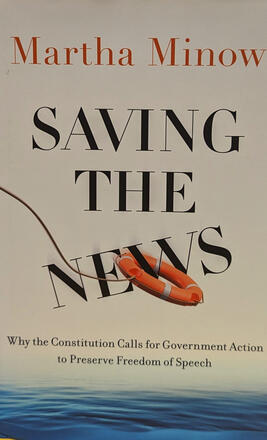
In this book, American legal scholar Martha Minow provides an overview of the current media environment in the United States, shedding light on the trends that pose threats to dependable and widely accessible news, both at the local and global levels.in doing so, it discusses several key points regarding the challenges and changes in the field of communication and their impact on democracy.
- The concept of "public interest" in communication policy is disappearing, which was originally central to regulations. This is a global trend in countries like the UK, Canada, Japan, and Australia.
- Advances in communication technology are not only transforming individual lives but also the roles of institutions, including government.
- There is an increasing variety of radio and television services, leading to a divided audience with differing beliefs and even "facts."
- Challenges such as artificial intelligence and deepfakes are emerging, posing new threats to the accuracy of information.
The result of these changes is a significant challenge to democracy, as the traditional model of news distribution and consumption no longer fits the digital age. The abundance of information, misinformation, and the decline of traditional journalism have created echo chambers, making it difficult for people to access diverse viewpoints. Furthermore, digital advertising's dominance by a few major platforms has disrupted traditional journalism's economic model.
According to the author, the situation calls for potential reforms, including a new fairness doctrine, efforts to distinguish opinions from news, regulation of digital platforms, and protection of user privacy. The author aims to argue the necessity for change, establish the legal foundations for such change, and propose specific policy approaches to address the shortcomings of the present news landscape. Additionally, it delves into strategies for overcoming potential constitutional obstacles to these reforms.
Tags: Freedom of expression Media freedom Media ownership Media pluralismThe content of this article can be used according to the terms of Creative Commons: Attribution-NonCommercial 4.0 International (CC BY-NC 4.0) . To do so use the the wording "this article was originally published on the Resource Centre on Media Freedom in Europe" including a direct active link to the original article page.

